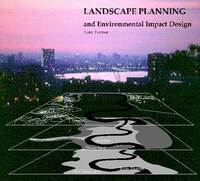- England
- Scotland
- France
- Holland
- Germany
- Italy
- Spain
- Portugal
- USA
- China
- Japan
- India
- Iran
- Advice
- Gardens
- England
- Scotland
- France
- Holland
- Germany
- Italy
- Spain
- Portugal
- USA
- China
- Japan
- India
- Iran
- Advice
- Garden Tours
Book: Landscape Planning and Environmental Impact Design: from EIA to EID
Chapter: Contents
This book was first published, in 1987, by Hutchinson Education, under the title Landscape Planning. A second edition was published, in 1998, by UCL Press, which became part of Routledge, and the title was expanded to Landscape Planning and Environmental Impact Design. The addition was made to highlight the fact that two approaches are necessary (1) territorial landscape plans show, in general terms, how landscapes can be conserved and improved (2) Environmental Impact Design should be applied to sectoral development projects as and when they are launched. The natural sequence is Environmental Assessment (EA) > Environmental Impact Analysis (EIA) > Environmental Impact Statement (EIS) > Environmental Impact Design (EID). Scientists and designers must work together: there is little point in assessment without design and design is likely to be environmentally unsound if not preceded by assessment. But in order to work together, environmental scientists must know something about design and designers must have basic scientific knowledge. Note on the electronic edition The 2007 electronic edition of the book contains some different illustrations to the 1998 printed edition. There are several reasons for the change: (1) new illustrations have become available (2) the opportunity has been taken to move towards colour illustrations (3) some permissions, granted for the printed edition, do not apply to the electronic edition (4) most of the original (black and white) illustations were lost when the original publisher (UCL Press) was taken over by Routledge. The cover illustration on this page is the original cover, designed by the author, which was adapted by UCL Press. The 1998 Fig numbers (eg [Fig 1.14]) remain in the text and there is a full list captions at the end of the book. The text reproduced here is based on the author's original draft, without the sub-editor's changes and corrections, but with some updating and other changes. The author retained the electronic rights in the original publishing agreement and it remains his view that paper and electronic texts serve different purposes and support each other than. A printed edition is best if one wants to read a full text and an electronic edition is best for finding references to specific points. An electronic edition also allows the author to correct some stupid mistakes (such as the statement, in the 1998 edition, that Chandigarh is in Pakistan) and, we hope, allows readers to correct other mistakes, add information, and comment on the issues raised in the book.
